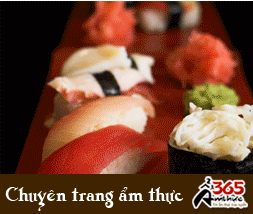Asian consumers go back to basics in downturn
Published: 19/05/2009 05:00
Forget about bells and whistles. Asians have gone back to basics in the economic slowdown and are opting for no-frills, lower- priced products rather than brand names and items with fancy features that rarely get used. | |||||||
| Manufacturers across the region, the worldâs largest producer of electronics and white goods, are more than happy to oblige as they scramble for orders that will keep their heads above water until the economic tide changes. âPeople are hesitant to buy topnotch, expensive models, but they still want to buy decent ones with some useful functions,â said Kohei Ueda, a general manager at Bic Camera, a major consumer electronics chain in Japan. From laptops without standard accessories such as CD-roms, to rice cookers and microwave ovens with minimal functions, brands such as Samsung and LG Electronics are quickly introducing basic items that can be sold at lower price points. Itâs all about surviving the slowdown which has dealt a severe blow to Asiaâs export-dependent economies such as South Korea which saw exports drop 25 percent in the first quarter of the year alone. âIn an economic downturn, liquidity problems outweigh the factor of profits. Therefore, it would be important to keep their factories running and pay back debt,â said Choe Soon-kyoo, a professor of Yonsei Universityâs business school in Seoul. âThey are adopting that (low-price) strategy to maintain liquidity rather than to make profits,â he added. Buoyant sales from these products are providing relief, and much needed cash flow, to companies that posted heavy profit falls or swung to quarterly losses early this year such as Samsung Electronics whose earnings plummeted to 619 billion won in the March quarter from 2.2 trillion won a year ago. Rationalizing Some companies such as LG Electronics are introducing new products to capture market share during a time of uncertainty. Late last year, it introduced the Cookie, a smart phone that sells for 590,000 won (US$475) 20-40 percent cheaper than other smart phones with price tags of $600-800. âOur Cookie phone is designed to fit in the recession environment,” Skott Ahn, president and CEO of LG Electronicsâ Mobile Communications unit, remarked at a recent media event. âAcceptance of touchscreen phones is growing but thereâs a price barrier. Our target is making premium phones more affordable and widely available.â Doing away with redundancies in functions and rationalizing product line-ups helps companies cut back on costs. For consumers, it may reflect a desire for simplicity at a time of austerity, a sharp contrast to the rampant materialism of the bygone boom years. âUntil now consumers had vague expectations that multi-functioning products would be good ones and they could not help paying higher prices to get quality functions,” said LG Economic Research Institute in a recent research note. âBut consumers started being fatigued with multiple functions, and (began) looking for divergent products with core functions.” Scaling back The âno frillsâ attitude goes beyond electronics. Sales of cheap staples such as noodles and fast-cooking meals have risen even as purchases of items such as meat have fallen due to the slowdown. In Japan, one of the countryâs leading department stores has reduced the range of products it sells by 40 percent to cut down on inventory costs as Japanese retail sales slow to the lowest levels in four years. âItâs time for back to basics. Customers have changed dramatically in the past few months,â Motoya Okada, the president of Aeon Co. Ltd. department store, said at a news conference in March. âBy reducing the variety of items, the number of suppliers will be also reduced, which will be reflected in our bargaining power,â he added. One store in Tokyo, run by Aeon, saw its sales of frying pans rise after it cut variety to 37 styles from 60, according to officials from the firm. Park Jean, an analyst for Woori Investment & Securities in Seoul, said reducing the breadth of product lines is an effective way of cutting costs in a difficult business environment. âIt is a matter of efficiency,â he said. âMass production of a few core products can lower production costs rather than producing a variety of models on a small scale.â Making profits is tough in a difficult economy with the International Monetary Fund predicting that private consumption in Asia will remain subdued as long as rising unemployment, weak confidence and low asset prices weigh on household spending. Kim Rando, a consumer science professor at Seoul National University, said the trick is to differentiate products and cut production costs by designing easy-to-use products that retain the functions that consumers most want and need. Streamlined products may be the rage for some time if consumer preferences for simple, easy-to-use products prevail once Asian economies begin to accelerate again, he said. âIf the divergence trend is more about removing redundancies and simpler but stylish design than about lowering prices, it then would last even after the economy rebounds,â he said. Source: Reuters | |||||||
Provide by Vietnam Travel
Asian consumers go back to basics in downturn - International - News | vietnam travel company
You can see more
- ASEAN Community Exhibition hold in Danang
- Vietnam and U.S. travel societies to jointly launch tourism products
- Hung Kings’ death anniversaries commemorated in Berlin
- Tourism cooperation potential between Vietnam and Indonesia
- OPEC, non-OPEC to look at extending oil-output cut by six months
- Events welcome Italian friendship
- 70,000 sea tourists travel to Vietnam
- PM wants stronger oil and gas cooperation with Russia
enews & updates
Sign up to receive breaking news as well as receive other site updates!
- Banh Đa Cua - a traditional Hai Phong specialty
- Exploring Lai Chau cuisine
- Hanoi ranked top 3 cuisine in the world in 2023
- Beautiful resorts for a weekend escape close to Hanoi
- Travel trends in 2023
- In the spring, Moc Chau is covered in plum blossoms.
- The Most Wonderful Destinations In Sapa
- Top 3 Special festivals in Vietnam during Tet holiday - 2023
- 5 tourist hotspots expected to see a spike in visitors during Lunar New Year 2023
- How To Make Kitchen Cleaned
-
vietnam travel
http://www.vietnamtourism.org.vn " Vietnam Tourism: Vietnam Travel Guide, Culture, Travel, Entertainment, Guide, News, and...
-
Vietnam culture, culture travel
http://travel.org.vn " Vietnam culture
-
Vietnam travel, vietnam travel news, vietnam in photos
http://www.nccorp.vn " Vietnam travel, vietnam travel news, vietnam in photos
-
Vietnam tourism
http://www.vietnamtourism.org.vn " The official online information on culture, travel, entertainment, and including facts, maps,...
-
Vietnam Travel and Tourism
http://www.vietnamtourism.org.vn/ " Vietnam Travel, Entertainment, People, Agents, Company, Vietnam Tourism information.
-
Information travel online
http://www.travellive.org "Information travel online













